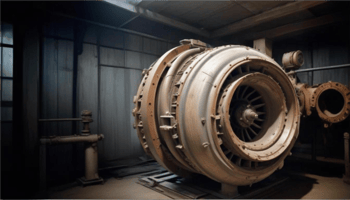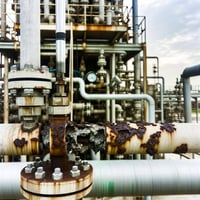A few years ago, a refinery encountered significant issues with control valves that had been stored...
The Impact of Subzero Temperatures on Equipment Longevity
Discover how subzero temperatures can affect the lifespan of your equipment and learn how to protect them from potential damage.
Understanding the Effects of Subzero Temperatures on Equipment
Subzero temperatures can have a significant impact on the lifespan of equipment. When exposed to extreme cold, various components of the equipment can be affected, leading to potential damage and reduced performance. Understanding these effects is crucial for ensuring the longevity of your equipment.
One of the main effects of subzero temperatures is the contraction of materials. As the temperature drops, the materials used in the equipment, such as metals and plastics, contract and become more brittle. This can lead to cracks, fractures, and other structural damage.

In addition to material contraction, subzero temperatures can also cause issues with lubrication. Cold temperatures can cause lubricants to thicken or solidify, resulting in poor lubrication and increased friction. This can lead to excessive wear and tear on moving parts, reducing the overall lifespan of the equipment.
Furthermore, subzero temperatures can also affect the electrical components of equipment. Cold temperatures can cause condensation to form, which can damage sensitive electronics. This can result in malfunctions, short circuits, and other electrical issues.
Overall, understanding the effects of subzero temperatures on equipment is essential for taking appropriate measures to protect your equipment and ensure its longevity. By being aware of these effects, you can implement strategies to mitigate potential damage and maintain optimal performance even in cold environments.
Common Types of Equipment Affected by Subzero Temperatures
Subzero temperatures can impact various types of equipment. Some common examples include:
- Vehicles: Extreme cold can affect the performance of vehicles, including engines, batteries, and tires. It can lead to difficulties in starting the engine, reduced battery life, and decreased traction on icy roads.
- Outdoor Power Tools: Equipment such as chainsaws, lawnmowers, and leaf blowers can be affected by subzero temperatures. Cold weather can cause fuel lines to freeze, spark plugs to malfunction, and engine oil to thicken, resulting in difficulties in starting and operating the equipment.
- Industrial Machinery: Machinery used in industrial settings, such as manufacturing plants or construction sites, can also be impacted by subzero temperatures. Cold weather can cause mechanical parts to contract, hydraulic systems to freeze, and electrical components to malfunction.
These are just a few examples, but it's important to note that subzero temperatures can affect a wide range of equipment. It's crucial to assess the potential risks for the specific equipment you use and take appropriate measures to mitigate any potential damage.
Signs of Damage Caused by Extreme Cold
Extreme cold can cause visible signs of damage on equipment. Some common signs to watch out for include:
- Cracks or fractures: Subzero temperatures can make materials more brittle, leading to cracks or fractures in the equipment's structure. Inspect the equipment regularly for any signs of damage.
- Leaks: Cold temperatures can cause seals, gaskets, and pipes to contract and crack, resulting in leaks. Check for any signs of leaks or fluid loss.
- Electrical issues: If the equipment relies on electrical components, be vigilant for any malfunctions, such as flickering lights, short circuits, or unresponsive controls.
- Reduced performance: Cold temperatures can impact the overall performance of equipment. Look out for decreased power, slower operation, or difficulties in starting the equipment.
If you notice any of these signs, it's important to address them promptly. Continuing to use damaged equipment can lead to further issues and potentially compromise safety. Consider consulting a professional for repairs or maintenance.
Tips for Maintaining Equipment in Cold Environments
To protect your equipment and ensure its longevity in cold environments, consider the following tips:
- Store equipment properly: When not in use, store equipment in a dry and temperature-controlled environment, such as a garage or storage room. Avoid leaving equipment outdoors for extended periods in subzero temperatures.
- Use proper lubrication: Choose lubricants that are designed for cold temperatures and ensure regular lubrication of moving parts. This will help prevent excessive wear and maintain optimal performance.
- Keep batteries warm: If your equipment uses batteries, keep them in a warm location when not in use. Cold temperatures can drain batteries quickly, reducing their lifespan.
- Insulate exposed components: For equipment that needs to be used outdoors in subzero temperatures, consider using insulation materials to protect vulnerable components. This can help prevent damage from extreme cold.
- Perform regular inspections: Regularly inspect your equipment for any signs of damage or wear caused by cold temperatures. Address any issues promptly to prevent further damage.
- Follow manufacturer guidelines: Always follow the manufacturer's instructions and recommendations for using and maintaining your equipment. They may provide specific guidance on cold-weather operation and maintenance.
By implementing these tips, you can minimize the impact of subzero temperatures on your equipment and prolong its lifespan.
Importance of Regular Inspections and Maintenance
Regular inspections and maintenance are crucial for ensuring the longevity of your equipment, especially in cold environments. Here's why they are important:
- Early detection of damage: Regular inspections allow you to identify any signs of damage caused by subzero temperatures at an early stage. This enables you to take prompt action and prevent further deterioration.
- Preventive maintenance: By following a regular maintenance schedule, you can address potential issues before they become major problems. This includes tasks such as lubrication, cleaning, and component checks.
- Optimal performance: Well-maintained equipment performs better and is less likely to experience issues in cold environments. Regular maintenance helps ensure that all components are in good working condition and properly protected against extreme cold.
- Safety: Cold temperatures can increase the risk of equipment failures, which can pose safety hazards. Regular inspections and maintenance help minimize these risks and ensure the safe operation of equipment.
Make it a priority to schedule regular inspections and maintenance for your equipment, particularly if it is frequently exposed to subzero temperatures. This proactive approach can save you time, money, and potential headaches in the long run.



